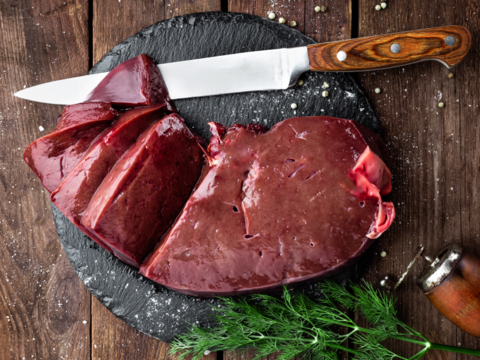
The most nutrient-dense foods are not vegetables — they’re organ meats! So what if we were to bring them back to the American diet? Today, we introduce an easy way to do that. Image courtesy The Provision House
High-protein diets are all the rage these days, and it’s easy to understand why: recent research has shown that eating a lot of protein is one of the easiest and most effective ways to manage your body’s energy balance.[1-5] A high-protein diet maximizes satiety, energy burn (from the thermogenic effect of food), and muscle synthesis, all of which helps you stay strong and lean.
In response to this information, many athletes and bodybuilders consciously maximize their consumption of meat and other protein-rich animal foods. In 2021, pan-fried steaks are a common sight on lifters’ social media pages, usually paired with a generous helping of eggs.
Eating steak and eggs is a great start, but most of us are still missing a crucial part of the picture: human nutrition is calibrated for “tip-to-tail” eating, which means that in order to achieve optimal health, we should consume every part of a butchered animal, not just the muscle meats that are commonly sold in American supermarkets and restaurants.
We need organ meats.
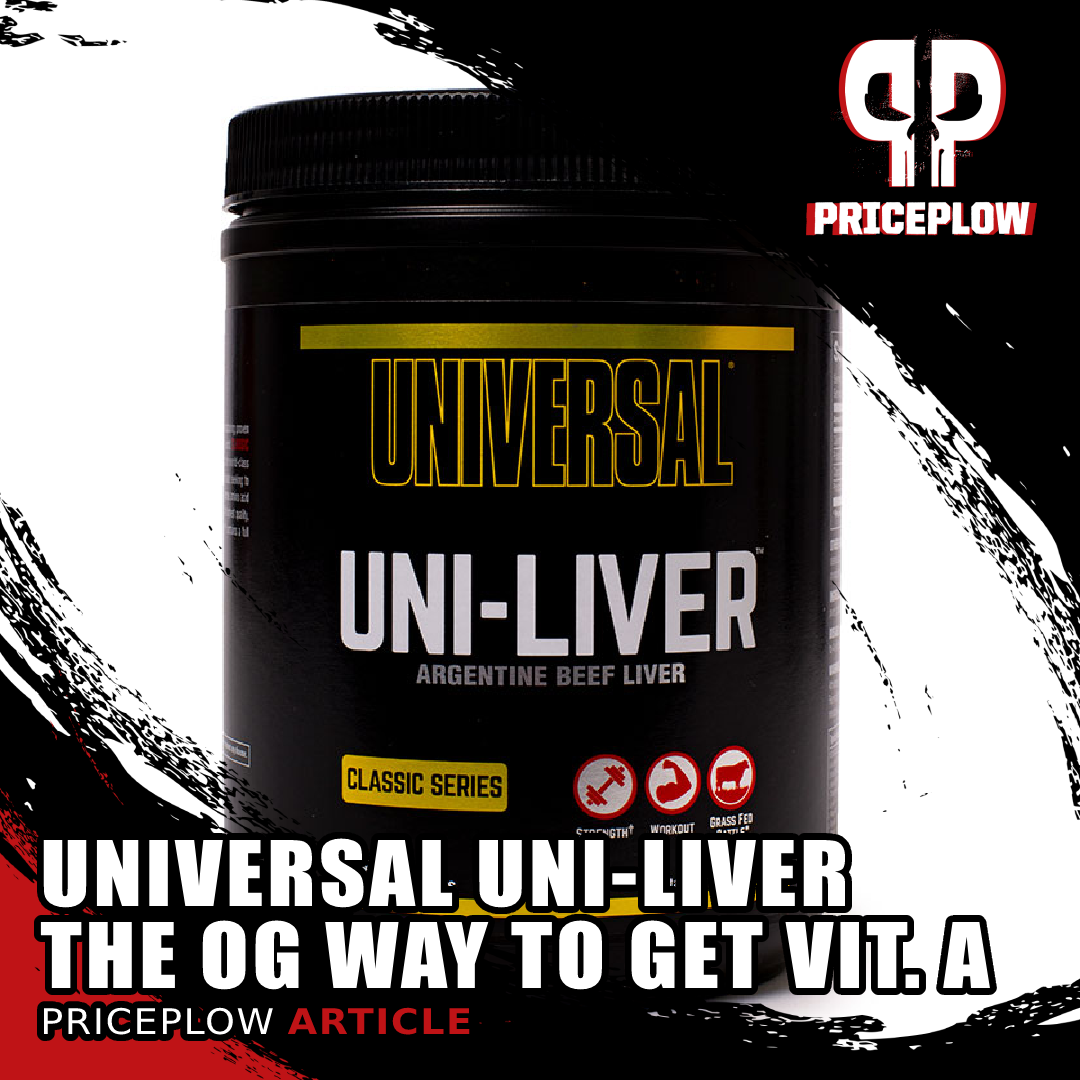
Before organ meat consumption started trending back, one company has been telling you to eat liver all along: Universal Nutrition with their Uni-Liver tablets.
And as the bodybuilding and greater health community is realizing that organ meats are the most nutrient-dense foods on the planet, they’re bringing them back. “Knowing your butcher” has returned as a trend, getting organs put into ground meat is growing in popularity, and supplements and snacks made with organ meat are resurging.
Uni-Liver by Universal Nutrition: The Original Liver Tabs
Here in the supplement world, there’s one brand that’s been promoting liver for decades – before it became cool again. Universal Nutrition, creators of the famed Animal Pak, have long had Uni-Liver, which are desiccated liver tablets. Made from beef liver, they’re big, and they bring big nutrition with them.
In this article, we pay our respects to the original liver promoters – Universal Nutrition – but more importantly, talk about why liver and organ meats are so incredibly important and need to be brought back to the Western diet. First, we check on PricePlow’s Uni-Liver price listings, then get into the science
Universal Uni-Liver – Deals and Price Drop Alerts
Get Price Alerts
No spam, no scams.
Disclosure: PricePlow relies on pricing from stores with which we have a business relationship. We work hard to keep pricing current, but you may find a better offer.
Posts are sponsored in part by the retailers and/or brands listed on this page.
This area is reserved for Team PricePlow's upcoming Ingredients video.
Subscribe to our channel and sign up for notifications so you catch it when it goes live!
Why liver?
Among organ meats, liver is special. It’s far and away the single greatest source of vitamin A in the human diet. No other plant or animal source of the nutrient comes even close.
Active vitamins and nutrients
In fact, vitamin A from plant sources isn’t even the active form of the vitamin! The carotenoids usually counted as “vitamin A” in plants are actually a precursor to retinol, the form of vitamin A that’s biologically active in the body.[6] In other words, carotenoids must be converted to retinol by the body before they can be used.[6]
Unfortunately, the efficiency of this conversion process varies greatly from person to person, depending on several factors, including genetics.[7] In many people, it’s highly inefficient,[7] meaning that plant-based vitamin-A sources are an unreliable and, for most people, a sub-optimal way to meet their daily requirements.
For the purpose of ensuring optimal vitamin A status, it’s a much better bet to eat animal products, including butter, egg yolk, and liver. These foods contain preformed retinol[6] that can be absorbed and utilized by the body without going through a rate-limited conversion process.[7]
Many of us are not eating enough of these foods to prevent vitamin A deficiency (VAD). According to the 2005-2016 National Health and Nutrition Examination (NHANES) survey, conducted by the Centers for Disease Control, nearly half the U.S. population gets inadequate amounts of vitamin A from their diet.[8]
That matters a lot, because vitamin A is absolutely essential for optimal health.
Why we need vitamin A: the thyroid connection
The first and most important thing to know about vitamin A is that it’s essential for optimal thyroid function. Vitamin A has been shown to modulate the function of the entire thyroid-pituitary axis.[9] Its deficiency, however, interferes with the thyroid’s iodine uptake,[9] which is a major problem because iodine deficiency on its own can lead to hypothyroidism or simply lower energy levels and slower metabolism. However, animal research indicates that vitamin A deficiency (VAD) combined with iodine deficiency can produce a more severe case of hypothyroidism than the mineral deficiency alone.[9]
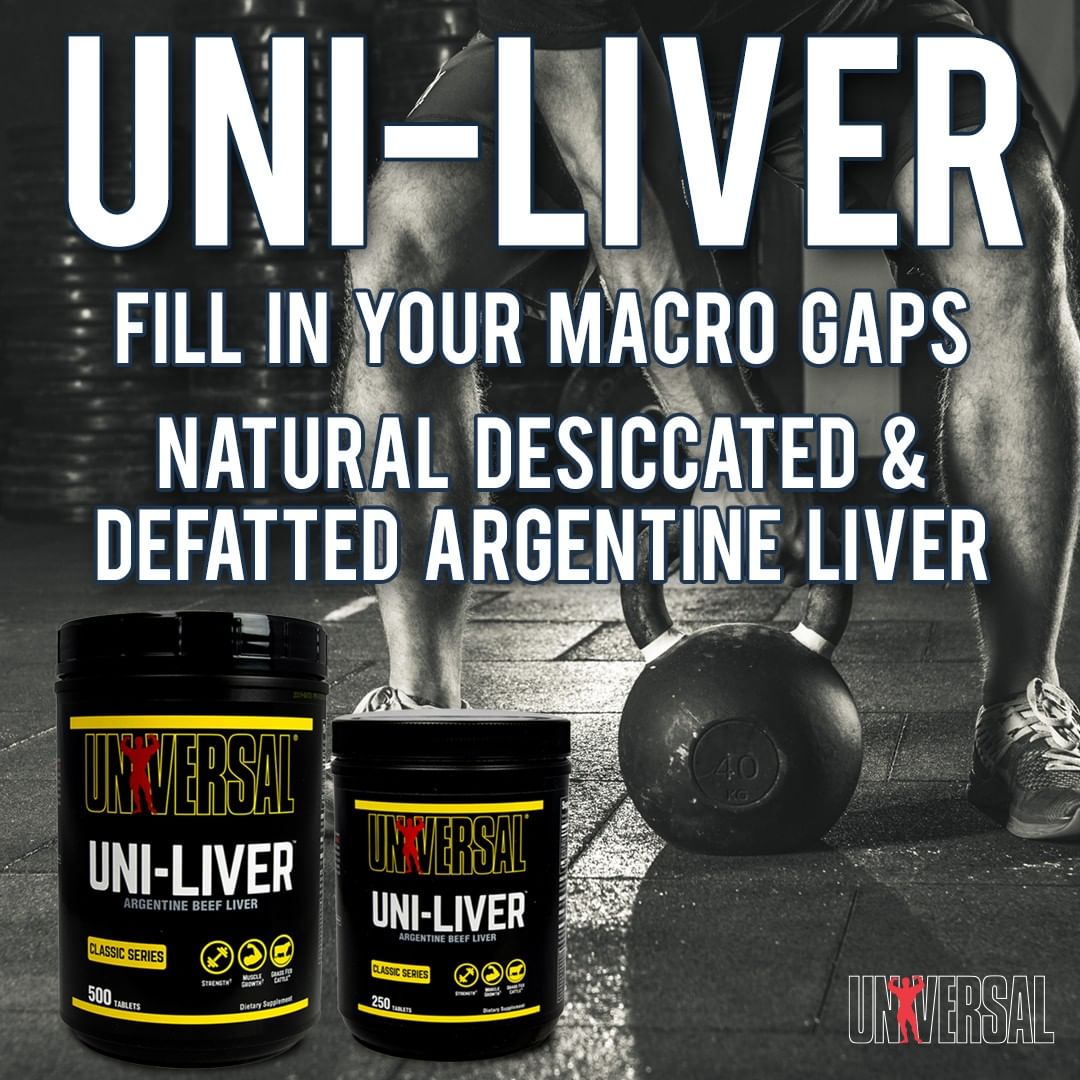
If you want to increase Vitamin A intake, there’s no better way to do it than with beef liver – and Uni-Liver provides a supplemental way to get it in without cooking or eating it!
Human research confirms this: in one study of Moroccan children with iodine deficiencies, researchers directly measured the effects of VAD. The greater the degree of VAD, the larger the child’s thyroid gland, and the higher the circulating level of thyroid-stimulating hormone (TSH) – two important markers of poor thyroid health.[10] When the kids were given either iodine or a combination of iodine and vitamin A, the group receiving both showed a significantly better improvement in thyroid health than children receiving only iodine.[10]
In another study of healthy premenopausal women – that is, women without clinical thyroid disease who were under the age of 50 – vitamin A supplementation significantly reduced their TSH levels, which indicates improved thyroid function. It also increased triiodothyronine (T3) while decreasing thyroxine (T4).[11] Since T3 is the active thyroid hormone and T4 is its precursor, this is another indication of optimized thyroid function in healthy individuals. In other words, your thyroid can potentially benefit from vitamin A supplementation even if you don’t have active thyroid disease.
So why does all this thyroid stuff matter?
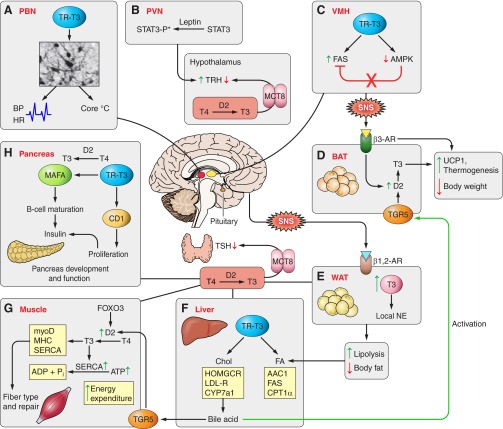
The thyroid affects nearly everything,[12] and we want it functioning as well possible. Appropriate iodine and active vitamin A are two critically important components for that.
The thyroid is the “master gland” of the whole human metabolism – thyroid function regulates the all-important basal metabolic rate (BMR).[12] A slow thyroid means a slow metabolism, which is why hypothyroidism is strongly associated with unwanted weight gain, often culminating in full-blown obesity.[12]
Besides increasing the metabolic rate, thyroid hormone (TH) also regulates leptin,[13] the “satiety hormone” that tells you to stop eating when your stomach is full.
Put simply, if you want to burn more energy and eat less food, naturally, you should think about optimizing your thyroid function through adequate vitamin A intake – and massive amounts of the active form are found in liver meat and bovine liver tabs like Uni-Liver.
What else does vitamin A do for us?
Other benefits of good vitamin A status include:
-
Anti-obesity, anti-diabetic effects In animal studies, stimulating vitamin A receptors, also known as retinoic acid receptors (RARs), has been shown to have anti-diabetic and anti-obesity effects, partly because RAR activity normalizes insulin sensitivity.[14] In mice that were bred to have minimal RAR activity, glucose metabolism was significantly disturbed.[15]
-
Improved sleep Stimulating RARs in mice has also been observed to improve the quality of REM sleep and stave off age-related decline in sleep quality.[16]
-
Better fertility Vitamin A appears to be crucial for male fertility, since RAR activity is centrally implicated in the formation of new sperm,[17] and RAR knockout mice (mice whose retinoic acid receptors have been genetically switched off) show impaired testicular function.[18]
Universal Animal Immune Pak comes in both paks (pills) and powder, and has many of the ingredients we preach for modern immune concerns!
An immunity boost RAR stimulation helps facilitate the formation of immune cells,[19] and vitamin A deficiency seems to dampen immune response.[20] Put simply, optimal vitamin A status may be needed for optimal immune function.
Note that this is one of several reasons why we included Uni-Liver in our immunity stack when previously discussing Animal Pak Immune.
-
Gut health In cell culture studies, vitamin A has been shown to help maintain the epithelial barrier in stomach cell matrices,[21] thus helping to prevent ulcerative colitis, also known as “leaky gut.” It’s a condition in which undigested food leaks out of the gut. If left untreated, leaky gut can lead to inflammatory disorders, including autoimmune disease.[22]
-
Skin and eye health Vitamin A is also famed for its role in promoting skin health[23] and eye health.[24]
This list is not by any means comprehensive – there are other potential benefits associated with optimal vitamin A status that we haven’t listed here. But for healthy, young, active people, we believe these are the benefits that are most relevant.
Can we get too much vitamin A?
Unfortunately, the answer to this question is yes – It’s quite possible to get too much vitamin A.
Unlike water soluble vitamins, which are simply eliminated from the body when taken in excess, vitamin A can accumulate in body fat. If chronically overdosed, it can reach toxic levels.[25]
We strongly recommend staying within the tolerable upper limit of vitamin A intake, which is 3,000 micrograms per day[26] of retinol from all sources (for both men and women), not just your supplements.
Below we run some strategies for optimizing (yet avoiding over-consumption) of the critical vitamin:
How much vitamin A is in a single serving of Uni-Liver?
One 60-grain serving of desiccated beef liver (2 tablets) will give you about 700 IU of retinol, which is equivalent to 200 micrograms[26,27] – a little less than a third of the vitamin A daily value (DV) of 900 micrograms per day for men (it’s 700 for women).[26] Considering that you probably get some carotenoids and retinol from your diet, this is potentially enough as a supplemental dose, at least for the purposes of preventing vitamin A deficiency.
Of course, once you’ve calculated your total retinol intake, you can consider increasing your dosage above the 2 tablet serving. Just make sure your final total is within the tolerable upper limit of 3,000 micrograms per day and be absolutely sure to factor all sources of vitamin A into your calculation of your overall intake – including other supplements.
Go-to dose: 2 tablets, three times a day with meals
Many of Universal’s long-time health enthusiasts have simply normalized taking two tablets with three meals a day, getting themselves an additional 600 micrograms total, on top of the protein and other micronutrients added in:
Is there anything else in beef liver tablets?
Beef liver is one of the most nutrient-dense foods on the planet, but with the relatively small serving sizes, the other major vitamin inside is vitamin B12. A single two-tablet serving of Universal’s Uni-Liver will give you about 40% of the DV for vitamin B12,[28] nothing to sneeze at.
Additionally, two tablets provide 3 grams of protein, and if you take that three times daily, an additional 9g of protein in your diet can actually move your macros a fair percentage.
Uni-Liver: the OG beef liver supplement
Uni-Liver is a natural desiccated and defatted liver tablet made from Argentine beef liver. It’s cold-processed for purity, and sourced from grass-fed, hormone-free cattle.
At the recommended dose of two tablets per serving, desiccated liver is most importantly a supercharged vitamin A supplement that actually works, and brings some protein along with it. And in light of the nutrient’s many crucial roles in human health, and the pervasive deficiency created, in part, by the American food supply, boosting our intake is a very good reason to take a desiccated liver supplement – especially if you don’t want to cook organ meats.
In general, it’s better to get nutrients in their natural forms— from whole-food sources—as opposed to synthetic or isolated forms. That’s why we recommend meeting your vitamin A supplementation needs with a desiccated liver product like Uni-Liver.
Universal Uni-Liver – Deals and Price Drop Alerts
Get Price Alerts
No spam, no scams.
Disclosure: PricePlow relies on pricing from stores with which we have a business relationship. We work hard to keep pricing current, but you may find a better offer.
Posts are sponsored in part by the retailers and/or brands listed on this page.
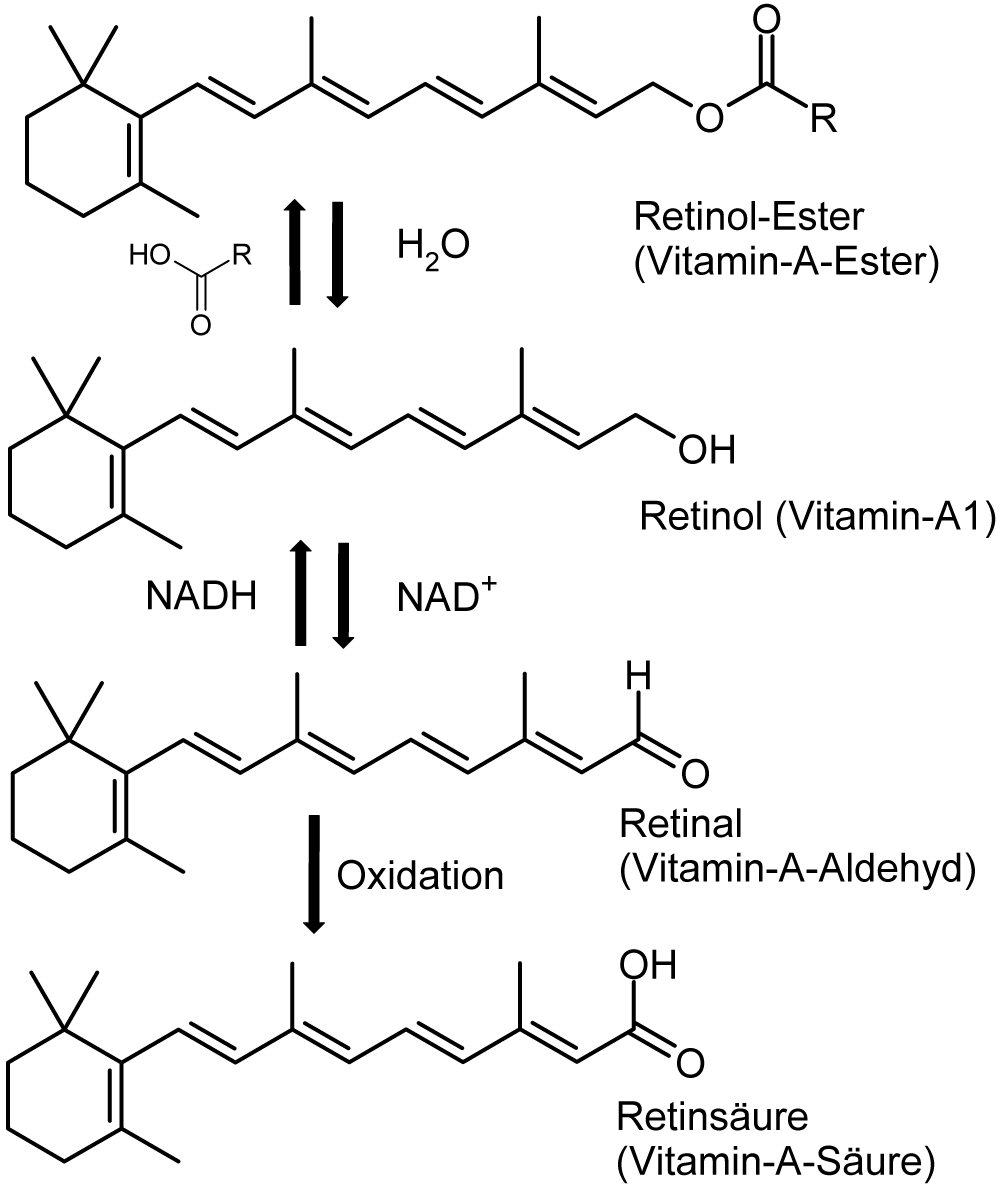


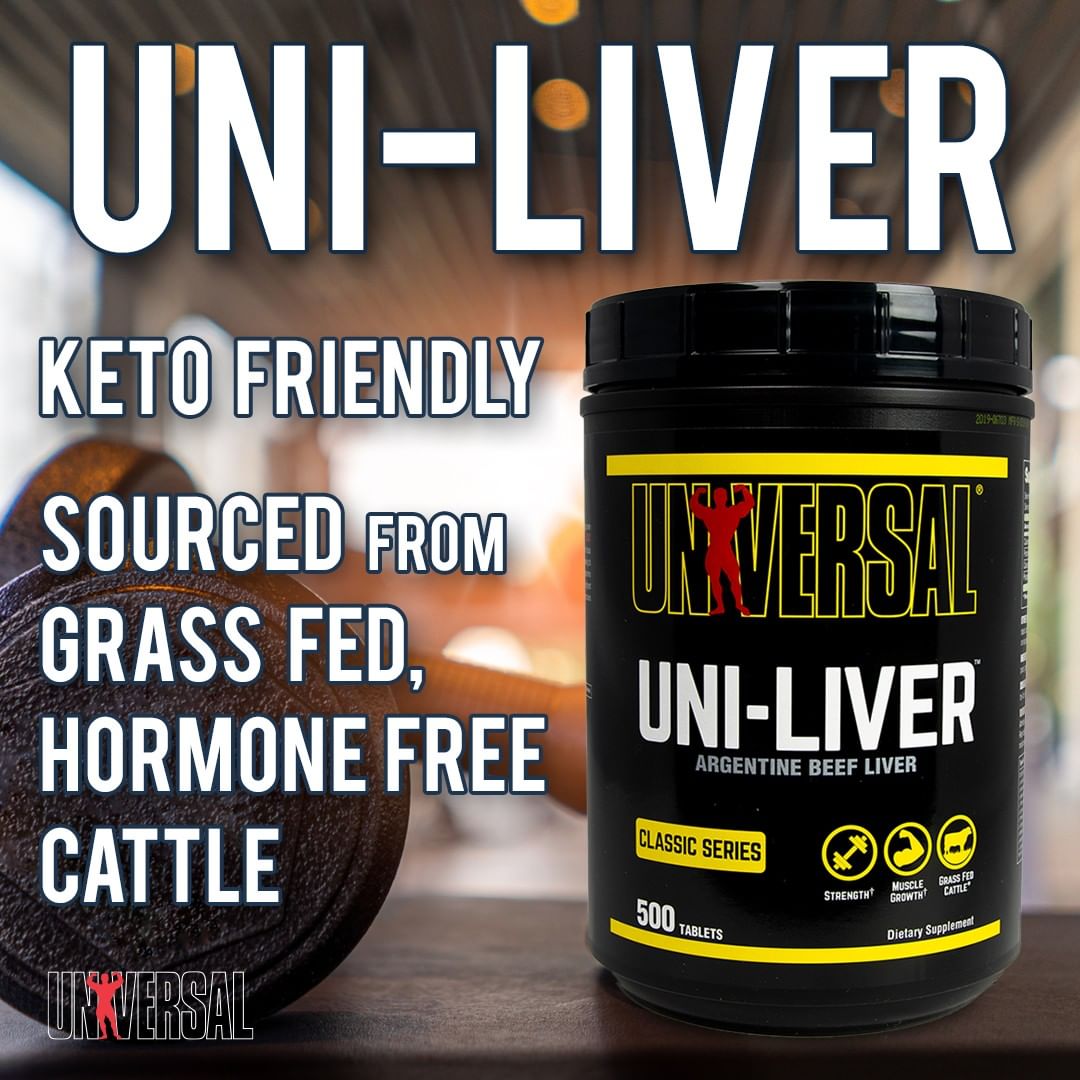




Comments and Discussion (Powered by the PricePlow Forum)